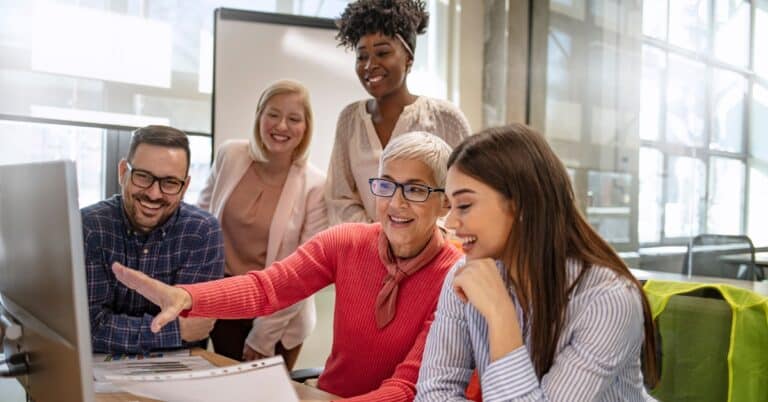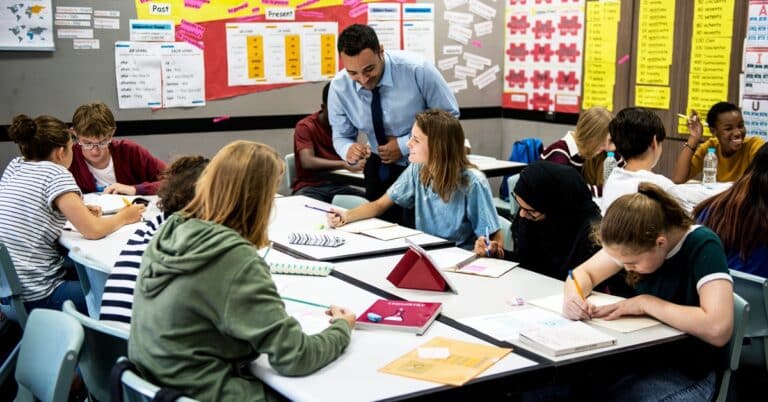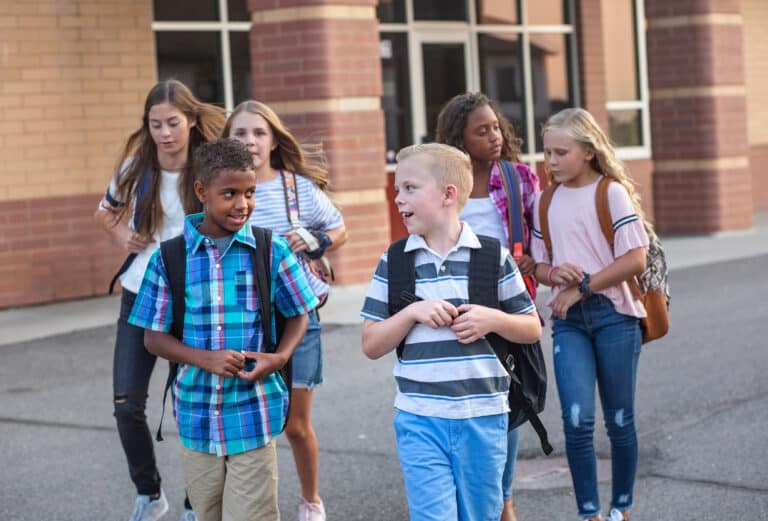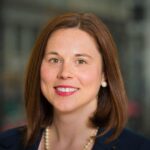If learners are going to graduate future-ready, the schools and districts they are graduating from need to adopt a future-thinking mindset when it comes to decision making.
For Jillian Bichsel, assistant superintendent of Avonworth School District in Pittsburgh, Pennsylvania, that meant trying something new when the district was preparing to engage in strategic planning—new as in, not even invented yet.
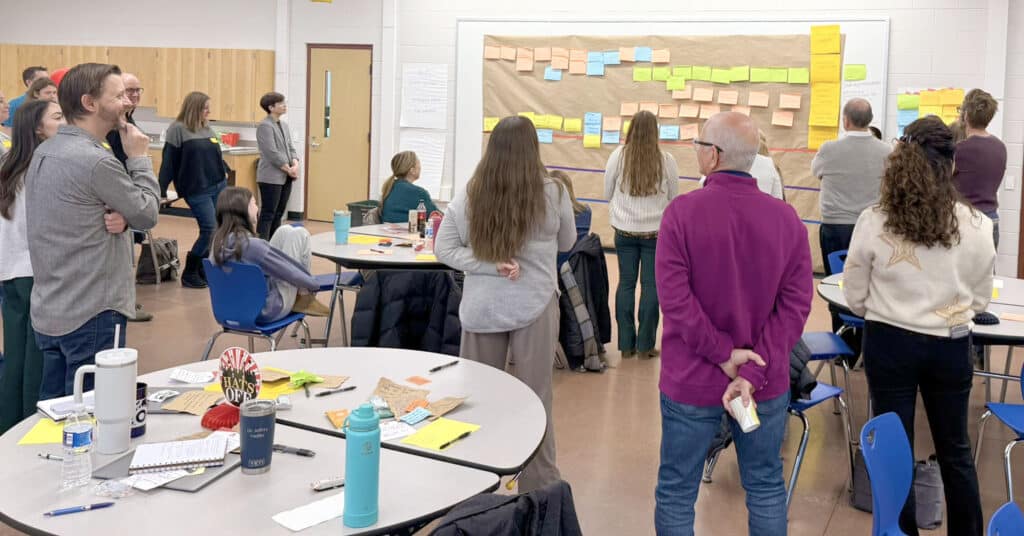
“Anytime you’re doing strategic planning, you’re looking into the future and thinking about what you want for your district, your students and your staff,” said Bichsel. After attending a session at last year’s SXSWEDU that aimed to immerse attendees in a 2035 graduation party, Bichsel brought KnowledgeWorks into her district to facilitate a similarly imagination-stretching activity with staff, students, community members and families. “Navigating the future includes so many unknowns. Since COVID, especially, there’s so much ambiguity, and things are changing constantly. Rather than just let the uncertainty sit out there, why don’t we wrap our heads around it together and consider as a district, what do we believe in? What do we want for our future?”
Immersive futures experiences invite participants to engage with the future in a way that challenges assumptions and breaks down some of the barriers and discomfort that can come with engaging with uncertainty and the unknown. It’s also a shared experience, which can be especially powerful within a learning community where diverse perspectives are critical to shaping hoped-for goals and outcomes for the future.
“With experiential futures, we’re leveraging reason and facts, and we’re appealing to emotions,” said Maria Crabtree, director of strategic foresight projects at KnowledgeWorks. “It’s not just something someone is telling you, or something you’re reading about. You see it and feel it, and that’s powerful.”
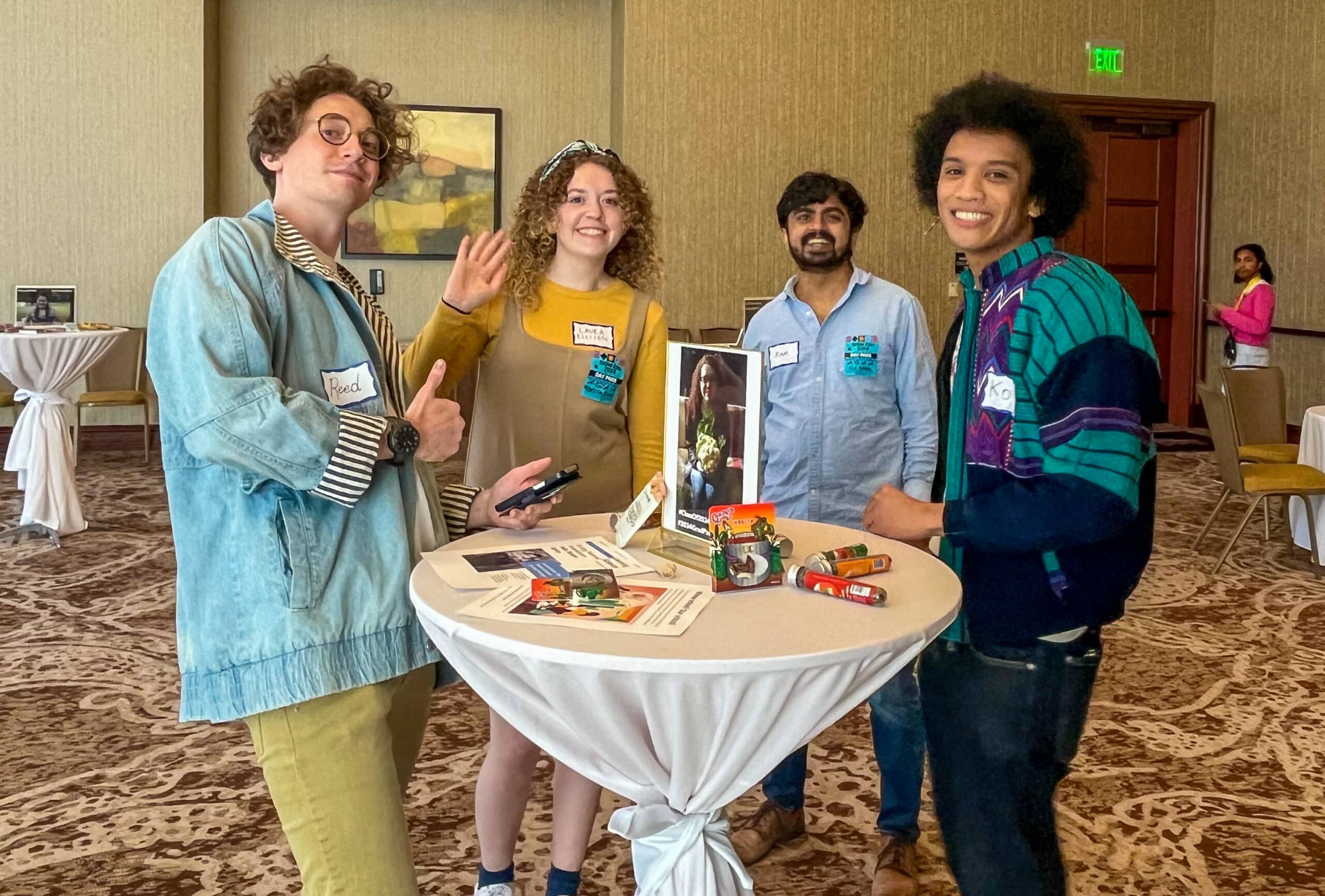
Experiential futures at SXSWEDU
Envisioning a future and working toward it.
At the Avonworth 2035 graduation party, learners played the roles of future graduates, while educators, families and business and community leaders asked questions and contributed their thoughts to a time capsule used in strategic planning efforts. Bichsel explains that the time capsule was a way to capture community hopes and dreams for what they wanted for their students, the district and themselves.
The engagement style, along with broad participation, was a different way to approach visioning or strategic planning. Attendees who might have struggled to engage in a more traditional meeting or workshop were able to have their voices heard. The immersive was planned to situate people in the future and expand ideas of what is possible, rather than just expanding upon the present.
“The next day we went through the time capsule to make sense of what had been shared, and from that experience, we created a timeline,” explained Bichsel. “If we start in 2035 and this is what we want to accomplish, what are the steps we need to take along the way to get there?”
Following the graduation party experience, Bichsel explained that the strategic planning committee took what they’d identified as themes from the time capsule and checked with staff, student and parent survey data, looking for similarities. While not everything lined up, the committee was able to identify key takeaways to inform the next steps. Bichsel noted that some things showed up in the time capsule and surveys: personalized learning, improving communication, equity, social-emotional learning and well-being.
“Now I’m running some small focus groups to follow up on what people were wondering about,” said Bichsel. “I’m asking, what can we communicate better? When it comes to equity, what are the concerns?”
Bichsel also said the district has a history of thinking outside the box. It’s what made an immersive futures experience so intriguing, as a way to think differently about how to kick off strategic planning to ensure they’re truly innovating. The district actively engages in strategic planning using the insights gathered during the immersive futures experience and ongoing review of the different data sets.
“There’s been a lot of reimagining about what high school could be,” said Bichsel. “The 2035 graduation party really pushed my thinking in the sense that, if school is not the only hub for learning, what other organizations or locations should we be considering? What’s to say when a student leaves here, they’re not learning somewhere else?”
Supporting the future of learning with education policies.
In our memo to the then-incoming administration this past November, Supporting Students, Advancing Our Future, we identified high school transformation as one of four key areas where immediate and long-term change is needed to ensure a more holistic and personalized educational experience for all students, better preparing them for success in an ever-evolving world. The memo argues that:
Reimagining high schools and their related structures is crucial for aligning K-12 education with the skills needed in today’s workforce. Personalized, competency-based approaches to graduation requirements, diplomas and credentials are an essential lever for high schools seeking to expand the types of flexible learning experiences available to students, as well as the types of credentials they can earn prior to graduation. This includes formal opportunities such as dual credit programs, work-based learning and career and technical education (CTE), as well as informal experiences like capstone projects and community engagement that help students develop the types of durable skills valued by postsecondary education, business and industry.
An immersive futures experience like the 2035 graduation party unlocks a whole host of possibilities for attendees to consider when it comes to high school transformation. For Bichsel, it’s a reminder of what is already within reach.
“Pennsylvania has become a little bit more flexible with seat-time, as long as we’re meeting a certain number of hours a year,” Bichsel said. “Partnerships, workforce, organizations, community colleges, universities, there’s so many possibilities.”
Each of those possibilities connects back to a learner’s hopes and dreams for the future, which Bichsel explained was an unintentional but welcome insight into their work with the learners who took on roles for the 2035 graduation party.
“They’re 15 and 16 years old and thinking about what life will be like in 10 years. We got to hear about their dreams, their concerns, the pressures they’re feeling. They’re very aware of what’s happening in the world and very self-aware,” explained Bichsel. “We really do need to think differently about how to best meet their needs. And if we ask them, they’ll tell us.”
